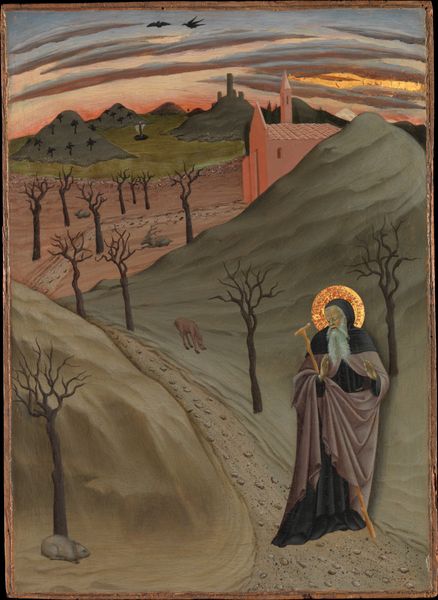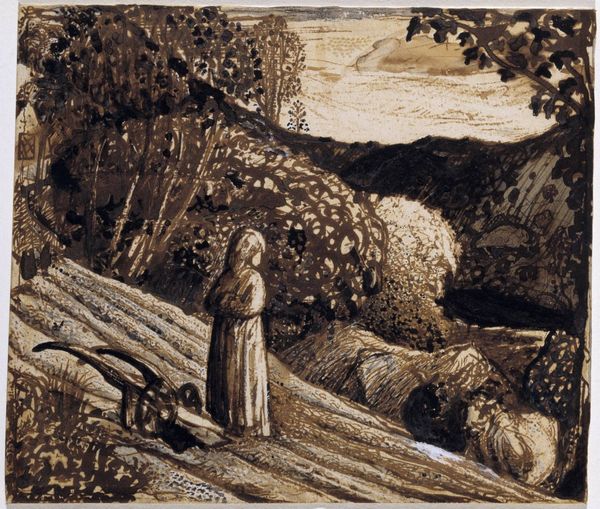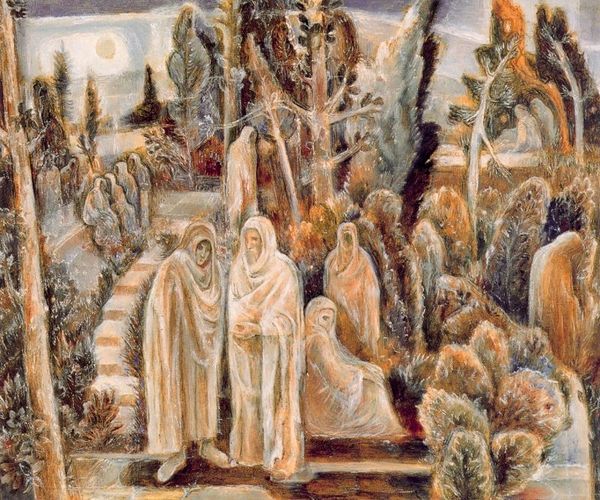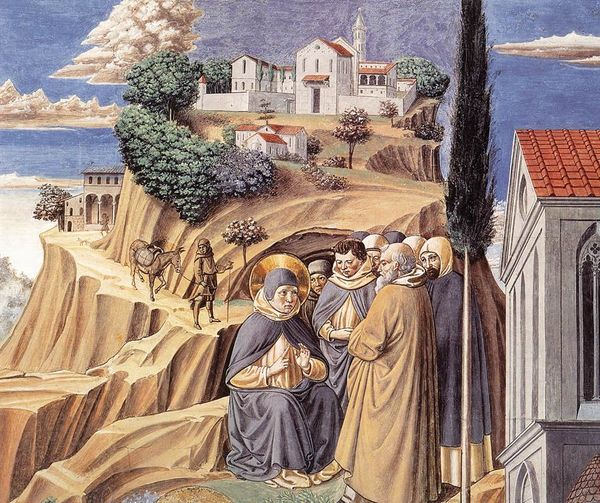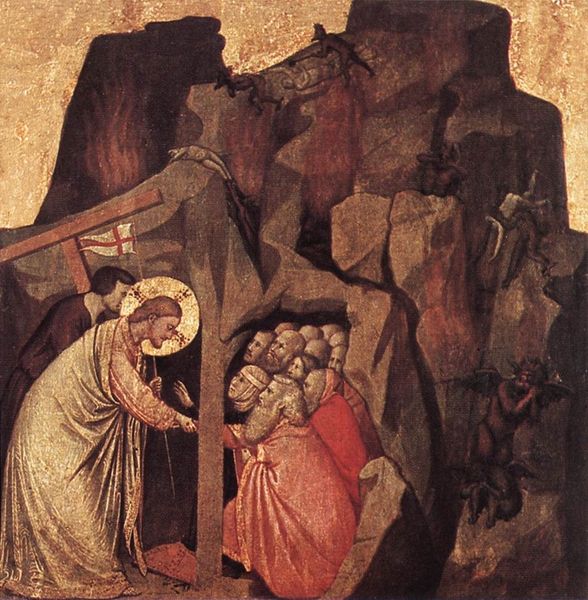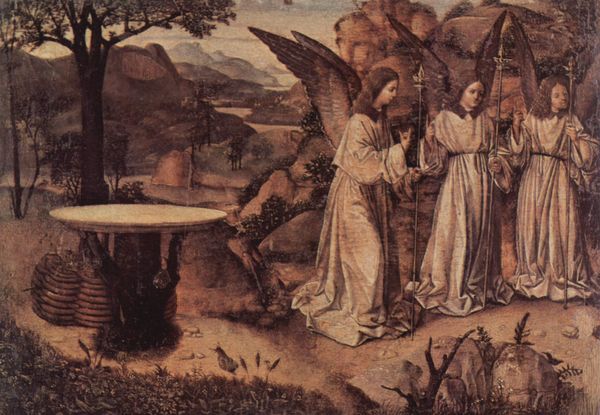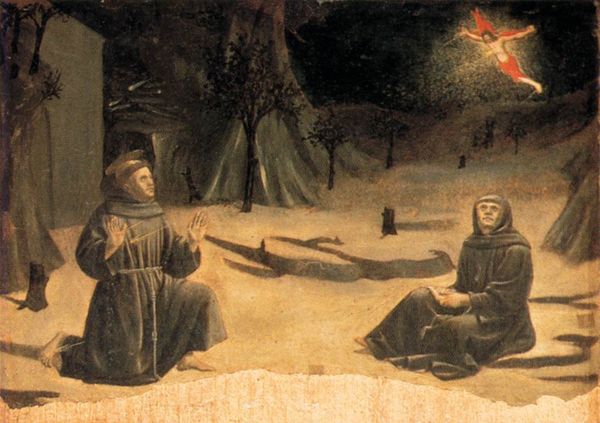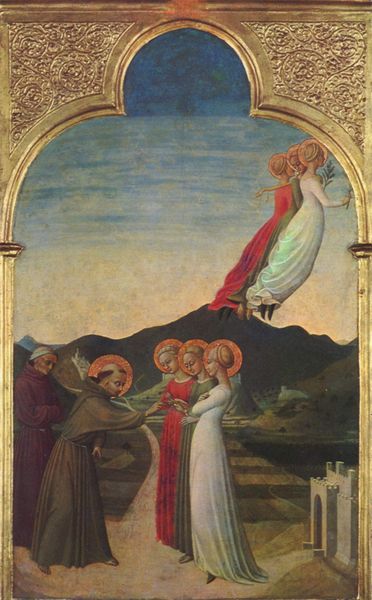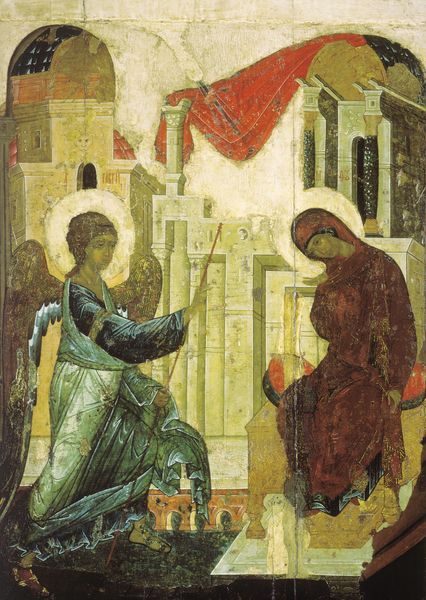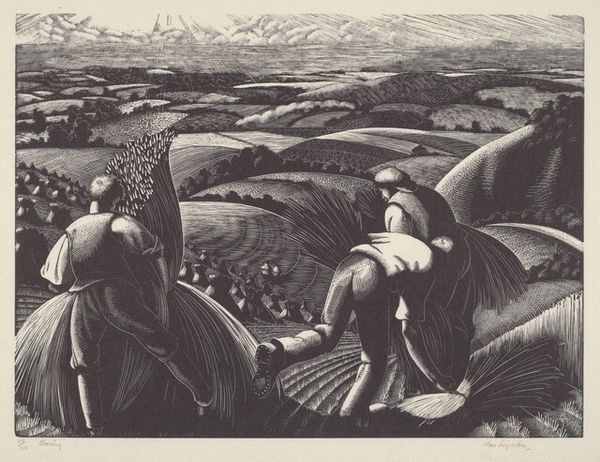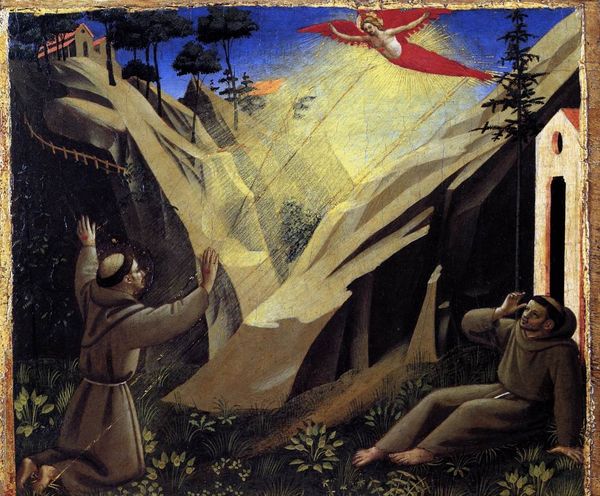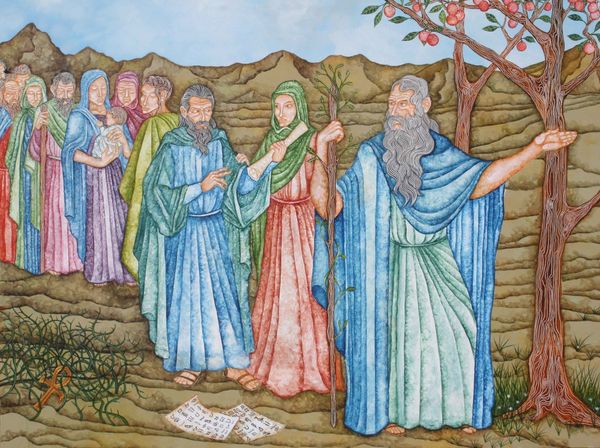
tempera, painting, oil-paint
#
narrative-art
#
tempera
#
painting
#
oil-paint
#
landscape
#
holy-places
#
figuration
#
oil painting
#
history-painting
#
italian-renaissance
#
early-renaissance
Copyright: Public domain
Editor: We're looking at "The Meeting of St. Anthony and St. Paul" by Il Sassetta, painted around 1440, using tempera and oil on wood. The landscape is really striking; it feels symbolic and stage-like. What's your read on this piece? Curator: Sassetta's work operates within a specific cultural framework. Remember, early Renaissance art, especially in locations like Siena, was heavily influenced by religious institutions. This panel was part of a larger altarpiece, commissioned to communicate specific theological messages to the public. How might the composition here – the stylized landscape, the prominent saints – reinforce institutional power at the time? Editor: Well, the gold halos certainly emphasize their saintly status, placing them in a separate, almost divine realm. The figures seem deliberately posed within the landscape to be exemplary, reinforcing religious authority. Curator: Precisely. And think about the political dimensions: wealthy patrons often commissioned these artworks, effectively shaping the visual narrative. Consider how the idealization of these saints, situated within an overtly religious context, can also reflect the values of the donors and their place in the social hierarchy. Do you see anything in the narrative here that reflects how religious belief permeated public life? Editor: I see the apparition of a centaur. That certainly shows how supernatural and otherworldly experiences were interwoven with daily experience at the time. The prominence of a narrative like this being showcased so publicly says a lot about the beliefs the institutions wanted to promote. Curator: Exactly. This wasn’t just about personal devotion; it was about projecting a particular worldview endorsed by the church and its wealthy supporters. Hopefully now when we consider this painting we can consider who the painting was really for, what purpose did it really have? Editor: This makes me appreciate how the altarpiece serves as a powerful intersection of faith, wealth, and public image in that historical moment. Thanks, that gave me something to consider about the purpose and agency of works.
Comments
No comments
Be the first to comment and join the conversation on the ultimate creative platform.
